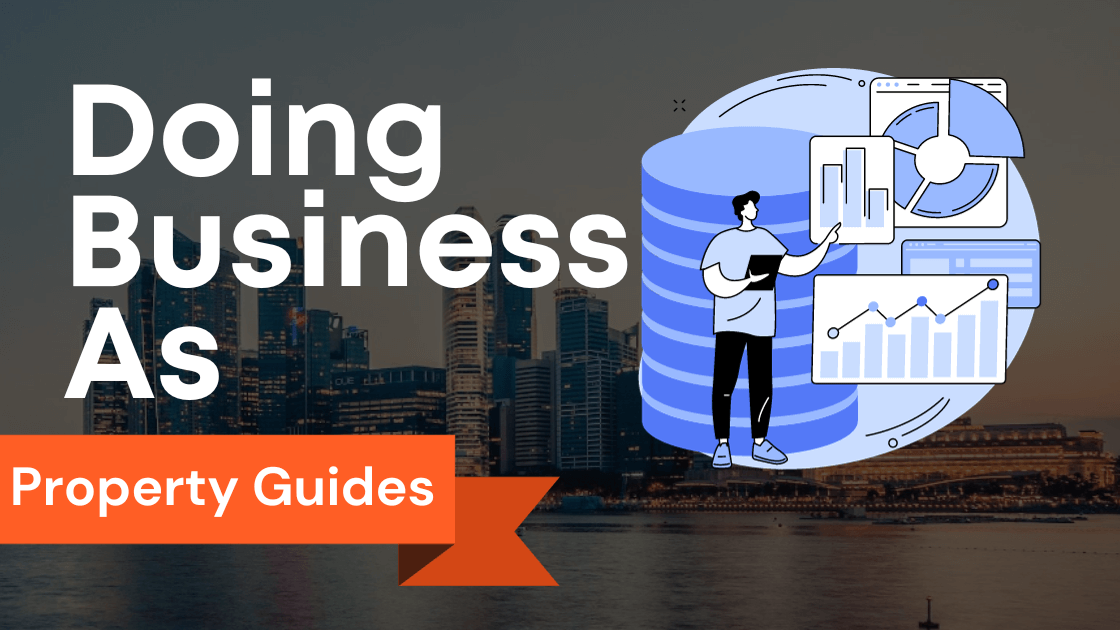What is a CPF Charge?

Definition of a CPF charge
A Discharge of CPF charge, also known as a Central Provident Fund (CPF) charge, refers to a legal encumbrance placed on a property in Singapore when CPF funds are used for its purchase.
The CPFB, which is responsible for managing the CPF account savings scheme, imposes this charge to protect its interests in case the property owner defaults on their CPF loan.
How is a CPF charge created?
A CPF charge is created when CPF funds are utilized as part of the financing for a property.
When a property is under construction or being purchased, the CPF board can issue a CPF charge.
This process involves verifying the conditions set by the CPF Board and ensuring compliance with the terms of the CPF loan agreement.
If a property is financed through a bank loan, the CPF charge is typically created when the loan is approved.
The CPF Board will work closely with the bank to ensure that the CPF funds are appropriately disbursed and secured by the CPF charge.
When is a CPF charge discharged?
A CPF charge can be discharged under certain circumstances, such as when the property is sold, refinanced, or fully paid off.
Releasing the CPF charge involves refunding the CPF funds used for the property purchase and removing the encumbrance on the property title.
To discharge the CPF charge, the property owner needs to notify the CPF Board and provide the necessary documentation, including proof of the completion of the property sale or loan settlement.
The CPF Board will verify the information and process the discharge.
It’s important to note that the CPF charge is automatically discharged when the property reaches its housing limits, which refers to the maximum number of years the property can be owned using CPF funds.
In summary, a CPF charge is a legal encumbrance placed on a property when CPF funds are utilized for its purchase.
It is created during the property financing process and can be discharged when the property is sold, refinanced, or fully paid off.
The CPF Board oversees the creation and discharge of the CPF charge, ensuring the proper utilization of CPF funds.
Key Takeaways
- CPF Charge Definition: A CPF charge, also known as a Central Provident Fund (CPF) charge, is a legal encumbrance on a property in Singapore when CPF funds are used for its purchase. It protects CPF Board’s interests in case of default.
- CPF Charge Creation: CPF charges are created when CPF funds are used as part of property financing. It involves verification and compliance with CPF loan terms.
- Discharging CPF Charge: CPF charges can be discharged when the property is sold, refinanced, or fully paid off. The CPF Board oversees the discharge process.
- Eligibility for Discharge: To discharge a CPF charge, the CPF account holder must be the property owner, and the property must have an existing mortgage.
- Steps to Discharge: Steps include gathering documents, engaging a lawyer, preparing documentation, submitting an application, liaising with the mortgagee, and completing the discharge.
- Costs of Discharge: Costs involve CPF Board fees and lawyer’s fees, which vary depending on complexity. Professional advice is advisable.
- Benefits of Discharge: Discharging a CPF charge provides increased liquidity, reduced financial burden, and greater financial flexibility.
- Impact on Retirement Savings: Discharging a CPF charge can affect retirement income, as the CPF savings used will no longer contribute to the Retirement Sum Scheme.
- Impact on Housing Affordability: It’s important to consider how discharging the CPF charge may affect your ability to afford housing or future housing transactions.
- Tax Implications: Discharging a CPF charge may have tax implications, so consult with relevant authorities for guidance.
- Alternatives to Discharge: Alternatives include partial discharge, using CPF funds to pay off housing loans, and making CPF top-ups to increase CPF savings. Carefully assess your financial situation and goals.
How to Discharge a CPF Charge in Singapore

Eligibility requirements for discharging a CPF charge
Before proceeding with the steps to discharge a CPF charge, it is essential to understand the eligibility requirements.
A Discharge of CPF charge is typically placed on a property when the owner uses their CPF savings to finance the purchase.
To discharge the CPF charge, the following criteria must be met:
- The CPF account holder must be the property owner.
- The property must have an existing mortgage.
- The owner must liaise and appoint a lawyer to discharge the mortgage.
- The owner needs to prepare the relevant documentation and submit an application to the CPF Board.
- The lawyer will liaise with the mortgagee’s lawyer to facilitate the discharge process.
- Note that these conditions may differ if the CPF charge is associated with a term loan or bank loan.
Steps to discharge a CPF charge
To discharge a CPF charge in Singapore, follow these steps:
- Gather all the necessary documents: This includes the title deed, CPF statement, and any other relevant documentation.
- Engage a lawyer: Appoint a lawyer to handle the discharge process. They will liaise with the mortgagee’s lawyer and the CPF Board.
- Prepare the relevant documentation: Your lawyer will guide you in preparing the necessary documents for the discharge, such as the discharge form and the legal undertaking.
- Apply: Your lawyer will submit the application to the CPF Board, along with the supporting documents.
- Liaise with the mortgagee: Your lawyer will coordinate with the mortgagee’s lawyer to ensure a smooth discharge process.
- Complete the discharge: Once the CPF Board approves the application, your lawyer will discharge the CPF charge and provide you with the necessary documentation.
Costs associated with discharging a CPF charge
There are costs involved in discharging a CPF charge.
These costs include:
- CPF Board fees: The CPF Board charges a fee for processing the discharge application.
- Lawyer’s fees: Engaging a lawyer to handle the discharge process will incur legal costs. The exact amount will vary depending on the complexity of the case and the lawyer’s fee structure.
It is advisable to seek professional advice and consult with your lawyer to understand the specific costs associated with discharging a CPF charge in your situation.
Remember, discharging a CPF charge is an important step in the property ownership process, and it is essential to follow the necessary steps and meet the eligibility requirements to ensure a smooth and successful discharge.
Benefits of Discharging a CPF Charge

Increased liquidity
If you have a CPF charge on your property in Singapore, discharging it can provide you with increased liquidity.
When the CPF charge is removed, the funds that were previously used to secure the charge will be released back into your CPF savings account.
This means you will have access to these funds and can use them for various purposes, such as investment opportunities, emergencies, or other financial needs.
Discharging the CPF charge effectively unlocks the CPF funds that were previously tied up, giving you greater financial flexibility.
Reduced financial burden
Discharging a CPF charge can also reduce your financial burden.
When you have a CPF charge, you are required to make regular repayments to your CPF account until the charge is fully paid off.
These repayments can be a strain on your finances, especially if you are already dealing with other financial commitments.
By discharging the CPF charge, you will no longer have to make these repayments, freeing up your cash flow and providing you with more financial breathing space.
This can alleviate stress and allow you to manage your finances better.
Greater flexibility
One of the critical benefits of discharging a CPF charge is the greater flexibility it provides.
With the CPF charge released, you have the option to withdraw your CPF funds or use them for other purposes.
For example, if you used your CPF savings to secure the charge, you can choose to remove the funds and use them for housing-related expenses, such as renovation or down payment for a new property.
Alternatively, you can choose to refund the amount used to your CPF account, allowing you to maintain your CPF savings for future use.
The flexibility to decide how to use your CPF funds can be advantageous in adapting to your changing financial needs and goals.
In summary, discharging a CPF charge in Singapore offers several benefits, including increased liquidity, reduced financial burden, and greater flexibility.
It allows you to access your CPF funds, alleviates financial strain, and provides you with more options in managing your finances.
If you have a CPF charge on your property, consider discharging it to enjoy these advantages.
Considerations Before Discharging a CPF Charge

Impact on retirement savings
Before considering discharging a CPF charge in Singapore, it is essential to understand the impact it may have on your retirement savings.
The CPF charge is a legal claim on your CPF savings, which is designed to safeguard your retirement funds.
Discharging the charge means accessing your CPF savings before reaching the entire retirement sum.
One key consideration is that discharging the CPF charge could affect your retirement income.
The CPF savings used for the discharge will no longer be available to provide monthly deductions under the Retirement Sum Scheme, potentially reducing the amount you receive during retirement.
Impact on housing affordability
Another important consideration is the impact on housing affordability.
The CPF charge on your property is linked to the CPF savings used for housing purposes.
Discharging the CPF charge may affect your housing limits and withdrawal limits.
It is crucial to understand how removing the charge will impact your ability to afford a home or any future housing transactions.
Tax implications
Discharging a CPF charge may also have tax implications.
When you discharge the charge, the CPF savings in your account, including accrued interest, will be released.
However, the released CPF savings may be subject to tax.
It is essential to consider the tax implications and consult with the CPF Boards or relevant financial institutions for guidance.
By carefully considering these factors, individuals can make informed decisions when it comes to discharging a CPF charge in Singapore.
It is essential to understand the potential impact on retirement savings, housing affordability, and the tax implications involved.
Seeking professional advice from the CPF Board or financial institutions can provide further clarity and guidance tailored to your specific situation.
Remember that discharging a CPF charge should only be done after careful consideration of these factors and after weighing the potential benefits against the potential drawbacks.
Alternatives to Discharging a CPF Charge

If you find yourself in a situation where you need to discharge a CPF charge in Singapore, there are alternatives available to you.
Here are three options you can consider:
Partial discharge of CPF charge
A partial discharge of the CPF charge allows you to release some of the CPF savings held in your CPF account.
This option is helpful if you still want to keep some money in your CPF account for retirement or other purposes while reducing the charge on your property.
By using the CPF money for redemption, you can free up funds while still maintaining a portion of your CPF account.
CPF housing loan
One alternative to discharging a CPF charge is to use CPF funds to pay off your CPF housing loan.
By doing so, you can effectively reduce the CPF charge on your property.
This option is beneficial if you have sufficient CPF savings and want to utilize them to clear your housing loan.
However, it is essential to note that using CPF funds for your home loan means you may have fewer funds available for CPF life or retirement.
CPF top-up
Another option is to make a CPF top-up, which involves contributing additional funds to your CPF account.
By doing so, you increase the CPF savings in your account and potentially reduce the CPF charge on your property.
This alternative is suitable if you have the financial means to make a top-up and want to maximize your CPF savings.
However, it is crucial to consider your financial situation and ensure that making a CPF top-up aligns with your long-term financial goals.
It is essential to consult with the CPF Board to understand the specific requirements and processes for each alternative.
By exploring these alternatives to discharging a CPF charge, you can make informed decisions that suit your financial needs and goals.
Conclusion
Discharge of CPF Charge Singapore
In conclusion, the discharge of CPF charges in Singapore is a crucial process that involves the use of CPF savings and the repayment of housing loans.
It is essential to understand the terms and conditions set by the CPF Board to ensure a smooth and secure transaction.
When purchasing a property using CPF savings, a charge is placed on the property to secure the loan.
Upon the sale of the property, the CPF charge needs to be discharged.
This can be done by using CPF savings or through redemption or discharge of the mortgage.
Singaporeans who have CPF charges on their property can use their CPF savings to service the housing loan.
The amount withdrawn from the CPF account when selling the property depends on whether the retirement sum, including the Basic Retirement Sum, has been met.
To lift the CPF charge, the relevant documents and forms need to be prepared and submitted.
It is advisable to engage a lawyer to liaise with the appropriate parties and ensure a smooth conveyancing process.
It is also important to note that unlicensed developers are not allowed to use CPF savings for the purchase of properties.
Singaporeans should always verify the credentials of the developer before entering any sale transaction.
In summary, the discharge of CPF charges in Singapore involves the use of CPF savings, the repayment of housing loans, and the necessary paperwork to secure the refund.
Understanding the terms and conditions set by the CPF Board is essential to ensure a seamless process.
Remember, CPF savings play a significant role in securing your future, whether it’s for the purchase of a property or planning for retirement.
It is essential to stay knowledgeable about CPF policies and make informed decisions regarding the use of CPF savings.
By understanding the discharge of the CPF charge process, you can navigate the intricacies of utilizing CPF savings and ensure a smooth transaction when buying or selling a property in Singapore.
Note: This article provides general information and should not be construed as legal or financial advice.
It is recommended to consult a professional advisor for personalized guidance regarding CPF matters.
Frequently Asked Questions
What is a CPF charge?
A CPF charge refers to a mortgage on a property where the borrower has used their Central Provident Fund (CPF) savings for the purchase.
How can I discharge of the CPF charge?
To discharge the CPF charge, you need to repay the outstanding loan amount using your CPF savings or other funds.
Can I use my CPF savings for other purposes if I have a CPF charge on my property?
No, when you have a CPF charge on your property, your CPF savings are locked and can only be used for the repayment of the housing loan.
What happens to the CPF savings used to pay for the property?
The CPF savings used to pay for the property are locked in the property as a charge until the loan is fully repaid.
Can I discharge the CPF charge if I sell my property?
Yes, when you sell your property, the CPF charge will be automatically discharged, and the CPF savings used will be refunded to your CPF account, including any accrued interest.
Can I transfer the CPF charge to another property?
No, the CPF charge is specific to the property and cannot be transferred to another property.
What happens if I default on my mortgage loan and cannot repay the CPF charge?
If you default on your mortgage loan and cannot repay the CPF charge, your property could be repossessed by the bank or finance company.
Can I use my CPF savings to purchase a property without a CPF charge?
Yes, you can use your CPF savings to purchase a property without a CPF charge if you have sufficient funds in your CPF Ordinary Account.
Can I use my CPF savings for residential properties other than an HDB flat?
Yes, you can use your CPF savings for the purchase of various residential properties, including private apartments and landed houses.
How much CPF savings can I use for the purchase of a property?
The maximum amount of CPF savings you can use for the purchase of a property depends on various factors, such as your age, the remaining lease of the property, and the Valuation Limit set by the CPF Board.












